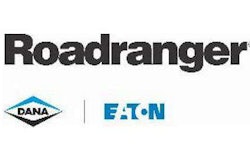Fleet consolidation can happen anywhere, and can significantly impact a fleet’s relationship with distributors.
Consolidation equals change, and that can transpire any number of ways.
Though not without challenges, there is money to be made for distributors willing to service large, consolidating fleet customers.
When presented with a consolidating customer, industry professionals recommend distributors evaluate how the relationship with the customer would function before bidding for their business.
Not every fleet consolidation benefits a distributor; but the ones that do — when properly identified and examined — can prove to be excellent business drivers.
When dealing with a current customer’s consolidation and expansion, the first step is uncovering how much a customer is changing, says Don Purcell, partner at Stone Truck Parts.
A 20-truck fleet adding five trucks might not require changes, but a customer who is adding 60 trucks and expanding into a different state is likely to require a different level of service.
Purcell says communicating with an expanding customer is the first step toward handling consolidation.
“You have to determine if you are still capable of servicing them,” he says. “For most distributors when a customer gets out there past 100 or 120 miles away, it almost becomes not feasible [to service them] alone.”
During these large-scale expansions, taking advantage of a buying group can be a significant asset, says Jim Pennig, vice president of business development at VIPAR Heavy Duty.
National buying groups have the capability of servicing regional and national fleet accounts across their network, and can work with their distributors to help them keep their local business when a customer grows out of their market.
“You have to have the footprint to service these large fleets and we have that,” Pennig says.
“That is a definite asset in our toolbox,” adds Harry Amoroso, president at B&A Friction and member of VIPAR Heavy Duty.
Tina Alread, director of sales and marketing at HDA Truck Pride, says she advises her group’s members to contact their national fleet team whenever a customer expands out of their service area.
RELATED: Options for a distributor’s toolbox
Alread says the HDA Truck Pride team communicates with the original distributor about its relationship with the growing fleet, and then uses that information to build a sales pitch to the fleet. A successful pitch allows the distributor to maintain its original business while offering the rest of the fleet’s business to the group’s national network.
“If Stone Truck Parts is servicing a customer in North Carolina and [the customer] expands into Florida, our role is to introduce the customer to other members who can cover that spread,” she says.
But it’s important to note that when a local customer consolidates into a regional or national fleet, their business practices also commonly change. Fleets gain buying power as they grow, and this power can lead to requests for standardized pricing, central billing and ordering.
In some cases, this can be seen as a drawback.
Amaroso says direct customer to distributor relationships are regularly minimized during consolidation in favor of national relationships with buying groups. While this approach helps the distributor network overall, it can neutralize years of hard work a distributor puts in with a specific customer representative.
There’s “no personal relationship” with the fleet’s national purchasing manager, he says. “What you’ve done in the past is not an advantage anymore.”
Alread and Pennig say their groups offer customers the option of a national or localized billing and ordering approach. A national customer focused solely on price is likely going to accept the central billing/ordering option, Alread says, but HDA Truck Pride makes sure the foundation that started the business relationship shines through.
“We try to be very cognizant of the relationship with the customer that started the business,” she says.
For customers choosing the centralized option, Pennig says VIPAR tries to make the financial aspect of transactions as efficient as possible. The company’s software has a price-correction tool that ensures customers are charged their agreed upon flat rate for all parts, and invoices and orders placed to the national network are routed directly to the local distributor.
This simplicity allows the distributor to focus solely on stocking and delivering the right part.
Other opportunities can come out of these programs as well.
Purcell says Stone Truck Parts has a 100 percent commitment to stock components required by HDA Truck Pride’s national accounts in its region. In some cases that guarantee might only net sales of a specific part a fleet requires, but at least it introduces the distributor to a customer it otherwise would not have.
“It gets our foot in the door,” Purcell says. “Once we establish that relationship we can look to grow the business.”
That’s an advantage that should not be overlooked, adds Amaroso. A consolidating fleet requiring a regional or national account might lead to a margin slip, but it also can lead to a new crop of prospective customers.
Amaroso says his company recently won the business of one regional fleet and did so well they were later contacted by several similar fleets with similar distribution requests. B&A Friction is now serving the entire group.
“We’re still doing business on an individual basis but with an established group,” he says.
But it’s important to note that not every fleet consolidation works for every distributor. Sometimes a customer will expand or enter a market in such a way that a distributor simply can’t make servicing them a viable option.
Purcell says that’s why research is so important before entering into a business agreement.
“You want to determine if the relationship makes good business sense for both parties,” he says.
Looking ahead, Pennig anticipates consolidation to continue, and says distributors willing to evolve with these growing fleets should have more chances to succeed.
“We see national fleets as a big opportunity moving forward,” he says. “It’s going to become very important for distributors to be involved.”








